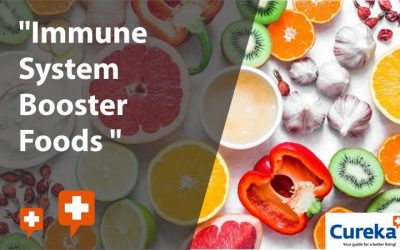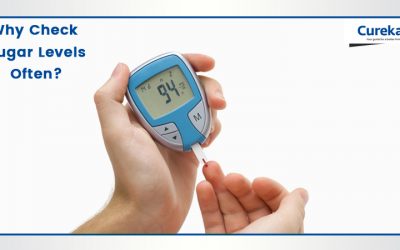Can Your Diet Help Improve IBS Symptoms? Foods to Eat and Avoid for IBS Relief
Your Gut’s Cry for Help
I couldn’t ignore a rumble, a twisted, unpredictable anguish that made my mornings a guessing game. Did I eat something? Feeling stressed? Or is it just my body rebelling? At that point, I became aware of Irritable Bowel Syndrome (IBS), a highly personal ailment that affects millions of people. I want you to understand about the IBS. You’re in the right place if you’ve confused why you have an irritable bowel movement or how to recognize the symptoms of IBS. Let’s start with the essentials.
The Gut Maze—What’s IBS All About?
Irritable Bowel Syndrome, or IBS for short, is a chronic illness that throws your digestion off balance and is more than just the result of a bad meal. You might experience unpredictable symptoms like diarrhea, constipation, or even a mix of both, often accompanied by some discomfort. So, what’s behind it? A gut that’s a bit too sensitive. While there’s no magic cure, following an IBS-friendly diet can definitely help bring some peace to the turmoil. Let’s dive into the foods that can either support you or make things worse.
Foods Low in FODMAPs
FODMAPs (Fermentable Oligosaccharides, Disaccharides, Monosaccharides, and Polyols) are short-chain carbohydrates that are badly absorbed in the small intestine. For those with IBS, certain foods high in FODMAPs can result in symptoms like gas and bloating. A low-FODMAP diet is often recommended as part of an IBS diet plan to manage symptoms.
IBS diet tip: To determine which FODMAPs cause your symptoms and cut them out of your diet, follow a 30-day IBS diet plan.
Spotlight: Foods to Eat for IBS Relief:
Let’s break it down. You definitely want to add these fantastic gut-friendly foods to your IBS diet:
Heroes of Low-FODMAP
Kiwifruit: Kiwifruit is nutrient-dense and low in FODMAPs.
Oats: Oats are a good source of carbohydrates. It is very low in FODMAPs.
Quinoa: Quinoa is a high-carbohydrate food with minimal FODMAPs.
These foods are essential in a 30-day IBS diet plan because they contain few fermentable carbs, which irritate sensitive stomachs.
2.Veggies
Pickled Beetroot: Pickled beetroot is a good source of nutrients.
Spinach: Spinach has good nutrient content and is low in FODMAPs. It offers nutrients without the bloat.
Potatoes and green beans: Potatoes and green beans are also a good source of nutrients, and it is low in FODMAPs.
3.Lean Proteins
Eggs: Eggs are a low FODMAP food that is often well accepted by those on a low FODMAP diet. They are also a rich source of protein. It rarely triggers IBS.
Meats: Plain cooked meats, poultry, and shellfish are often low in FODMAPs.
Red Flags: Foods to Avoid with IBS
Not every food is good for IBS. When creating your IBS diet plan, avoid the following:
High FODMAP Foes :
Wheat: Wheat is one of the single largest sources of FODMAPs in the Western diet. The most popular wheat sources include bread, spaghetti, morning cereals, biscuits, and pastries.
Legumes and pulses: Legumes and pulses are renowned for creating extra gas and bloating, which is partly due to their high FODMAP content.
Fruits: Every fruit has fructose content.
It’s noteworthy to note, though, that not all fruits are thought to be high in FODMAPs. This is due to the fact that some fruits have a lower fructose content than others.
High FODMAP fruits include:
- Mangoes
- Apples
- Plums
Dairy Disasters Milk and soft cheeses could be problematic for people with IBS and lactose intolerance. Use lactose-free alternatives in their place.
Greasy Guilty Pleasures: Foods high in fat and fried, like fries from fast food restaurants, may make cramps or diarrhea worse.
A key component of any successful IBS diet is avoiding these offenders, which will help you avoid the worst of the discomfort.
A Sample IBS Meal Plan
Here’s a basic example to help you get started if you’re not sure how to make an IBS meal plan that suits you:
Breakfast: Poha with Vegetables – A mild, satisfying breakfast is made with poha (flattened rice), carrots, peas, and a touch of turmeric. Poha is light and easy to digest.
Lunch: Vegetable Khichdi—a mild one-pot meal cooked with rice, moong dal, and other veggies. Don’t use beans and limit spices to cumin and turmeric.
Snacks: Both papaya and ripe bananas are easy to digest and high in fiber, which helps manage the symptoms of IBS.
Dinner: Plain Rice with Vegetable Stew—This dish is easy to digest and consists of a mild stew of green beans, potatoes, and carrots.
This choice manages IBS and tastes great.
Myth Buster: Myths Regarding the IBS Diet:
Myth: Gluten and dairy should be avoided by everyone with IBS.
Fact: Not all people with IBS should immediately avoid dairy or gluten, while some may be lactose intolerant or gluten sensitive.
Myth: IBS can be cured by fiber.
Fact: Although it’s not a cure, fiber can help with IBS-related constipation, and for some people, adding fiber can initially make IBS symptoms worse.
Your Road to IBS Relief:
There is no need to constantly compromise when living with IBS. You can control the chaos and take back your days with the correct IBS diet plan. Replace a trigger food with a gut-friendly one to start small, then work your way up. Try different diets, pay attention to your body, and eat your way to relief because the best diet for IBS is the one that works for you.











